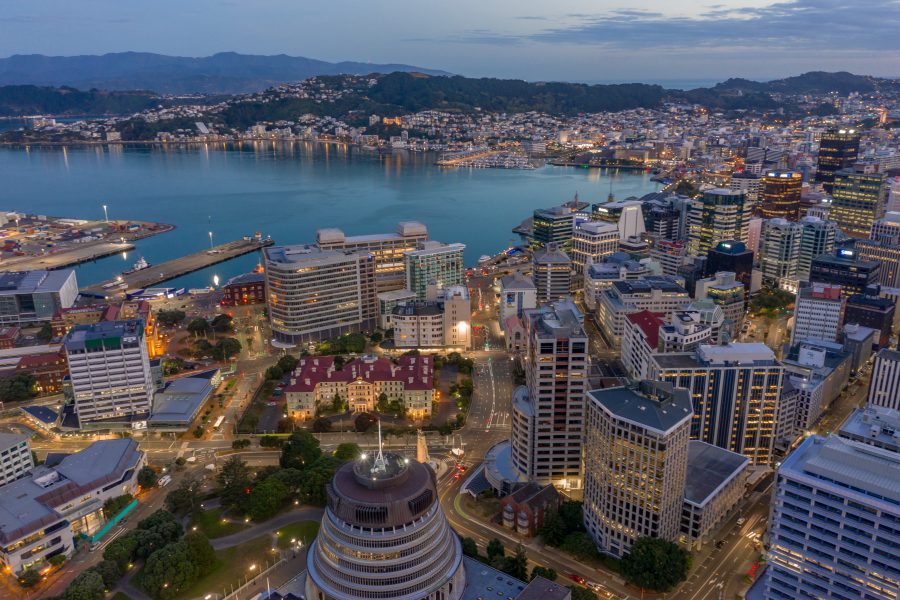Colliers’ latest vacancy survey results conducted across the major Australasian office and industrial markets show that trends are broadly aligned, though there are variations in performance across localities and sectors

Strongly underpinned by government occupation and bolstered by demand for higher quality office space from
the corporate sector, latest survey results show Wellington’s CBD to be the strongest performing of Australasia’s
major office markets.
Wellington’s overall office vacancy rate, as measured by Colliers, stood at 5.4% in December 2022, one of only
three centres in Australasia with a vacancy rate below 10%. Across the ditch, it was Australia’s national capital
that led the way. Similarly, the stability provided by a large government workforce has held Canberra’s overall
vacancy rate at a national low of 8.7%, according to the Property Council of Australia’s January 2023 survey.
Christchurch’s resurgent CBD market is another strong performer. The high proportion of new build, high quality office space has proved attractive to tenants with overall vacancy falling to 9.7% as at Colliers’ June 2022 survey.
Sydney takes fourth place with a 10.1% vacancy rate. Overall vacancy within Auckland’s CBD, stood at 12.5%, just behind vacancy rates recorded in Melbourne (11.9%) and Brisbane (12.1), but ahead of Adelaide and Perth where over 15% of stock is vacant.
Within the office sector, New Zealand leads the way particularly at the higher-quality end of the market. Within industrial markets though, Australian precincts have been the strongest performers despite New Zealand vacancy rates sitting at near-record lows.
Demand for industrial premises has increased significantly over recent years driven by growth across a wide
range of industrial occupier groups led by the retail trade and transport and logistics sectors. Accordingly, vacancy rates have fallen, and rental growth has accelerated as tenants compete for space.
The latest vacancy surveys conducted in New Zealand found overall vacancy across Auckland’s industrial precincts to stand at 1.8% (August 2022). In Wellington, just 1.3% of stock was vacant (November 2022). While these results are close to record lows, conditions across a majority of the major Australian centres are tighter still.
Sydney boasts the lowest vacancy rate at just 0.2%. Vacancy was also recorded as under 1% in Melbourne (0.6%), Perth (0.7%) and Brisbane (0.8%). Only Adelaide, which matched Wellington’s 1.3%, exceeded the 1% level.
Flight to quality is a regional trend
The flight-to-quality trend has intensified over recent years as the benefits provided by modern, flexible, high-specification premises in meeting evolving demand drivers have become increasingly apparent. Prime grade
premises better enable companies to meet ever more complex ESG requirements and assist them in attracting
employees back to the workplace.
The differing performance of prime and secondary space is clearly illustrated by results from the latest vacancy
surveys. Prime grade office vacancy rates sit below overall rates across all major centres, except for Brisbane CBD, where the addition of approximately 32,500 sqm of A-grade space has impacted results.
The divergence in demand across grades is particularly evident within New Zealand’s two largest markets. Once
again Wellington leads the way with just 1.3% of the CBD’s prime grade space being vacant at the end of 2022.
In Auckland, prime grade vacancy of 8.2% is lower than in all centres other than the two national capitals.
While the gap between prime and overall vacancy rates is not as wide within Sydney and Melbourne, this is largely because prime grade space comprises a higher proportion of the total stock than is the case in Auckland and Wellington.
In Melbourne, premium and A grade premises comprise just over 70% of the total, in Sydney the figure is 63%.
By contrast, despite recent additions to supply, offices classified as prime in Auckland comprise just under 50% of the total stock and in Wellington the figure is lower still at just under 25%.
The combination of tight market conditions and a low ratio of prime grade space signals a requirement for ongoing development in Wellington to fully unlock its potential.
Development response gathers pace
An increase in development activity is evident across most centres signalling an easing of conditions which will be welcomed by the tenancy sector.
Industrial building consent issuance reached record levels in Auckland in 2022 with just under 500,000 sqm of new workspace consented. Colliers is tracking approximately 245,000 sqm of premises which are under construction and expected to be completed in 2023. In Wellington, development intentions remained strong with 46,360 sqm of space consented. While this was down on the figures recorded in 2021 and 2020, it represents the third-highest total approved since 2010.
An acceleration in construction is apparent across the major Australian centres. Total supply for 2022 reached just over 2.4 million sqm. As it stands, anticipated supply for 2023 measures 3.6 million sqm.
The most active markets are set to be Sydney and Melbourne. Sydney’s supply pipeline has the potential for around 1.3 million sqm to be added compared with approximately 720,000 sqm in 2022. Over 1.1 million sqm is also slated to be added to Melbourne’s inventory over 2023 matching the total recorded in 2022.
Rental growth accelerated in 2022
Competition amongst tenants for a limited amount of industrial space has resulted in rents growing by record rates across multiple centres.
It was, once again the Sydney market which led the way with annual average rental growth, for prime grade
warehouses, of 24.9%. The second highest growth rate was recorded in Perth with an average increase of 22.6% being recorded while Melbourne saw a 20% increase.
Rental growth reached record levels in Auckland with average rates increasing by 19.4% outpacing both Brisbane and Adelaide. Wellington recorded the lowest rate of growth over the year with rents rising by just 6.3%, a moderate increase given the scarcity of prime grade leasing options.







